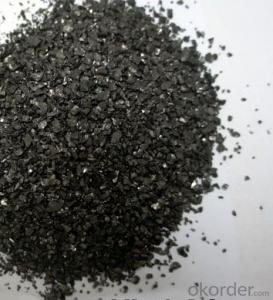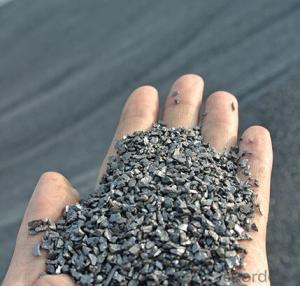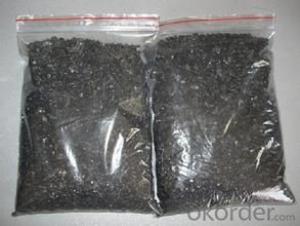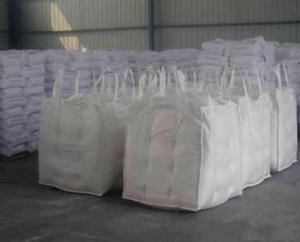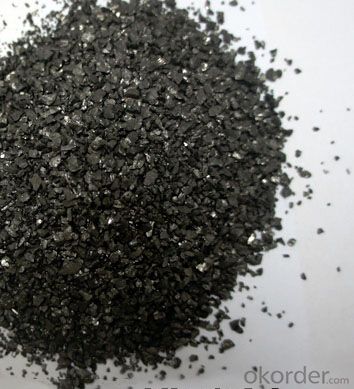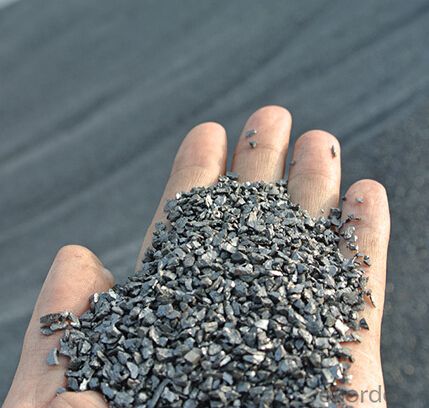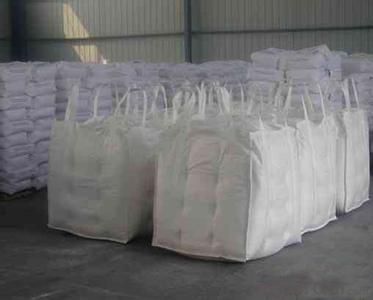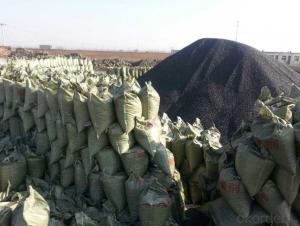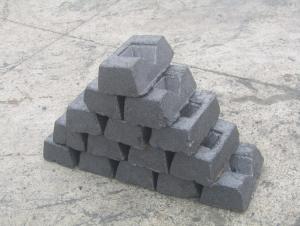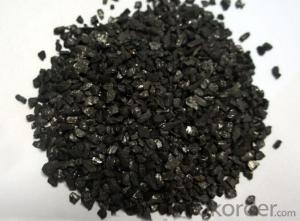Recarburizer 3-5mm 95% FC Carburant Carbon Additives
- Loading Port:
- Qingdao
- Payment Terms:
- TT OR LC
- Min Order Qty:
- 10 m.t.
- Supply Capability:
- 50000 m.t./month
OKorder Service Pledge
OKorder Financial Service
You Might Also Like
Specifications Of Recarburizer 95% FC
- High C content;
- Low S and N content;
- High abosorbility;
Recarburizer(Carburant, carbon additives) with high quality,0-20mm for metal casting foundry and steel plant, low nitrogen content and high carbon content, min 90% carbon content, at the same time as your requirements with no problem. The best media for adding carbon.
Technical Data Sheet of Recarburizer 95% FC
Fixed carbon | ≥ 95.5% |
Ash content | ≤ 5.0% |
Vol . Matter | ≤ 1.0% |
Sulphur content | ≤ 0.3% |
Moisture content | ≤ 0.3% |
Size | 0-20mm or as your requirement. |
Packing | - 25kg bag - One tone bags, Jumbo bag |
Delivery time | In 5-10 working days or depends on the order quantity |
Supply ability | 50000 Metric Ton Per Month |
Payment terms | L/C at sight or T/T |
Available Size: 0,1-4mm, 1-5mm, 3-8mm, 8-20mm (as per customers’ requirements)
Usage: widely used in casting foundry, steel-making, metallurgical Etc.
Applications of Recarburizer 95% FC
Mainly used in steel making in electrical stove, screening water, ship building sandblast to remove rust,producing carbon materials Etc.
Characteristics of Recarburizer 95% FC
- Particle size, porosity, absorption speed stable
- High degree of carbonize product, increase the original nuclear capability in the shape of liquid iron.
- Increased in the inoclation of nodular cast iron ball ink quantiyt, increase in th electric furnace iron graphit crystal nucleus.
- Excellent performance, stable.
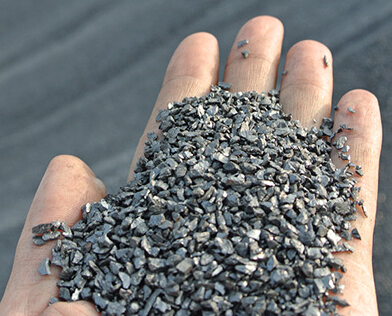

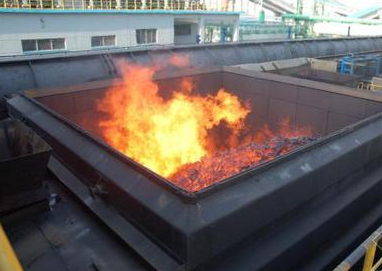

- Q: Something that seems to be used in the locomotive brake system. I haven't seen it, either. Who knows? It's better for the locomotive system to go back. Thank you!!
- The pantograph's bow head has several detachable electrically conductive strips of carbon or powder alloy used to contact the contact wire and power it from above.
- Q: Want advanced reinforcement, but I do not know where the high furnace rock carbon, looking for someone to guide...
- Mall. In fact, BUG can be card out! Inside the palace there is that BUG, but I personally think that no use, I used to strengthen the use of advanced carbon weapons on 12, even 3 did not become a storm, this is only the way to make money TX it
- Q: Does alumina react with carbon?
- NotThe smelting of Al in industry can only be done by electrolysis. Even at high temperatures, the reducibility of C is not as strong as Al, and the melting point of Al2O3 is very high. At this temperature, C has been gasified
- Q: What are fullerenes?
- Composed entirely of carbon atoms arranged in a spherical or cage-like structure, fullerenes represent a distinct category of molecules. Their discovery in 1985 sparked significant interest due to their intriguing properties and potential applications across various domains. The most extensively studied and renowned type of fullerene is buckminsterfullerene, also known as C60. This particular fullerene comprises 60 carbon atoms and takes on the form of a hollow sphere resembling a soccer ball. Fullerenes can also consist of varying numbers of carbon atoms, such as C70, C84, or even larger clusters. What sets fullerenes apart is their exceptional stability and distinctive structure. Carbon atoms within a fullerene form covalent bonds, creating a closed network of hexagons and pentagons. This configuration not only gives fullerenes their characteristic shape but also grants them remarkable mechanical, thermal, and chemical stability. Fullerenes possess an array of captivating properties that make them highly appealing for scientific research and technological advancements. They exhibit impressive electrical conductivity and can serve as efficient electron acceptors or donors in organic electronic devices. Additionally, they boast excellent optical properties, such as strong light absorption and emission, which have led to their utilization in solar cells and photovoltaic devices. Furthermore, fullerenes have demonstrated potential in medical and biological applications. Their unique cage-like structure allows for the encapsulation of other molecules within their hollow interior, making them ideal candidates for drug delivery systems. Fullerenes also possess potent antioxidant properties, making them viable contenders for various therapeutic treatments. To summarize, fullerenes represent an enthralling group of carbon-based molecules with distinctive structures and extraordinary properties. Their versatility and potential applications in electronics, energy, medicine, and other fields continue to be explored, rendering them an area of study that is both thrilling and promising within modern science.
- Q: How does carbon affect food production?
- Carbon affects food production in several ways. Firstly, carbon dioxide is a crucial component for photosynthesis, the process by which plants convert sunlight into energy. Increased levels of atmospheric carbon dioxide can potentially enhance crop yields by providing plants with more raw materials for growth. However, excessive carbon emissions are also responsible for climate change, leading to extreme weather events such as droughts, floods, and heatwaves, which can negatively impact food production. Additionally, the burning of fossil fuels releases carbon dioxide, contributing to air pollution that can harm crops and reduce their productivity. Therefore, while carbon is essential for plant growth, the excessive release of carbon emissions can have detrimental effects on food production.
- Q: What are the impacts of carbon emissions on the stability of coastal areas?
- Carbon emissions have significant impacts on the stability of coastal areas. The primary consequence is the acceleration of global warming, leading to rising sea levels and increased frequency and intensity of coastal storms. This combination results in erosion, coastal flooding, and loss of land, endangering ecosystems, infrastructure, and human settlements. Additionally, carbon emissions contribute to ocean acidification, harming marine life and disrupting delicate coastal ecosystems. Therefore, reducing carbon emissions is crucial to mitigate these adverse effects and ensure the long-term stability of coastal areas.
- Q: What are the challenges of carbon capture and storage technology?
- Carbon capture and storage (CCS) technology shows promise as a solution for reducing greenhouse gas emissions and combating climate change. Nevertheless, there are various obstacles that must be overcome in order for it to be widely adopted and effective. One of the primary hurdles associated with CCS technology is its considerable cost. The implementation of CCS necessitates significant investments in infrastructure, equipment, and operations, making it economically burdensome. Additionally, the capture process itself requires substantial amounts of energy, resulting in increased costs and potentially limiting its feasibility. Another challenge pertains to the limited capacity for storage. Identifying suitable underground sites for storing the captured carbon dioxide (CO2) is crucial, but can be difficult due to geological limitations. The task of identifying and evaluating suitable sites with adequate storage capacity is complex and necessitates meticulous planning. Furthermore, concerns exist regarding the long-term stability and integrity of the storage sites. Leakage of stored CO2 could compromise the effectiveness of CCS and pose environmental risks. Ensuring the secure and safe storage of captured carbon is essential to prevent any adverse impacts on ecosystems and public health. Transporting the captured CO2 from the capture sites to the storage facilities also presents a challenge. Establishing an efficient and extensive transportation infrastructure is necessary for the widespread implementation of CCS technology. Developing pipelines or other means of transportation capable of handling the volume of captured CO2 and ensuring its secure transport over long distances is crucial. Public acceptance and social factors also significantly impact the challenges associated with CCS technology. Local communities may have concerns and objections regarding potential risks associated with the capture, transport, and storage of CO2. Effectively addressing these concerns through transparent communication and engagement with stakeholders is vital for garnering public support and minimizing opposition. In conclusion, carbon capture and storage technology has the potential to greatly reduce greenhouse gas emissions. However, its challenges, including high costs, limited storage capacity, integrity concerns, transportation infrastructure, and public acceptance, must be addressed to ensure successful implementation and make a significant contribution to mitigating climate change.
- Q: What are the consequences of increased carbon emissions on political stability?
- Increased carbon emissions can have significant consequences on political stability. One of the main consequences is the exacerbation of environmental challenges and natural disasters. As carbon emissions contribute to global warming, the frequency and intensity of extreme weather events such as hurricanes, droughts, and flooding increase. These disasters can lead to displacement of communities, destruction of infrastructure, and loss of lives, all of which can have a destabilizing effect on societies. Moreover, the economic impact of increased carbon emissions can also create political instability. As climate change affects agriculture, water resources, and energy production, it can lead to economic disturbances, unemployment, and rising food prices. These economic hardships can fuel social unrest, protests, and even conflicts, particularly in countries that heavily rely on these sectors for their livelihoods. Additionally, the consequences of increased carbon emissions can exacerbate existing social and political tensions. Climate change often disproportionately affects vulnerable populations, such as communities in developing countries or marginalized groups. This inequality can aggravate social inequalities, increase social unrest, and lead to political instability as marginalized communities demand action and justice. Furthermore, the global nature of climate change necessitates international cooperation and agreements to effectively address the issue. However, increased carbon emissions can strain diplomatic relations, particularly between countries that have differing views on climate action. Disagreements over carbon reduction targets, carbon trading mechanisms, and financial contributions can lead to diplomatic tensions and hinder global cooperation, which may consequently impact political stability. In conclusion, increased carbon emissions have far-reaching consequences on political stability. From environmental challenges and natural disasters to economic disturbances and social tensions, the consequences of carbon emissions can strain societies and governments. To ensure political stability, it is imperative that global efforts are made to reduce carbon emissions and mitigate the impacts of climate change.
- Q: How is carbon used in the production of cosmetics?
- Carbon is used in the production of cosmetics in various forms. It can be found in activated charcoal, which is used for its ability to absorb impurities and toxins from the skin. Carbon black, a pigment made from carbon, is used to provide color in cosmetics such as eyeliner, mascara, and lipstick. Additionally, carbon-based compounds like carbonates and carbomers are used as stabilizers and thickeners in cosmetic formulations.
- Q: How does carbon affect ocean acidification?
- Carbon affects ocean acidification by increasing the concentration of carbon dioxide in the atmosphere. When carbon dioxide dissolves in seawater, it reacts with water molecules to form carbonic acid, which lowers the pH of the ocean. This decrease in pH makes the water more acidic, impacting marine organisms like corals, shellfish, and plankton, as it hinders their ability to build and maintain their shells or skeletons. Additionally, ocean acidification can disrupt the food chain and ecological balance in marine ecosystems.
Send your message to us
Recarburizer 3-5mm 95% FC Carburant Carbon Additives
- Loading Port:
- Qingdao
- Payment Terms:
- TT OR LC
- Min Order Qty:
- 10 m.t.
- Supply Capability:
- 50000 m.t./month
OKorder Service Pledge
OKorder Financial Service
Similar products
Hot products
Hot Searches
Related keywords
